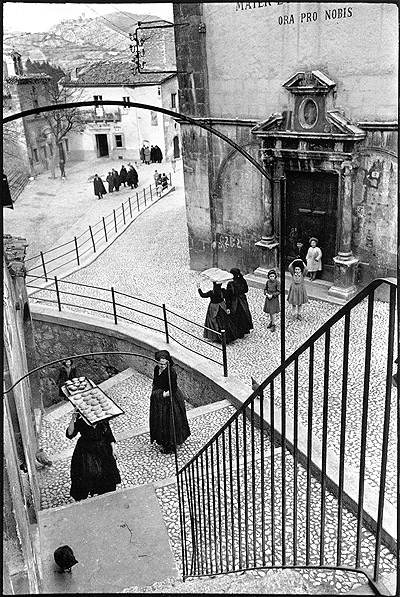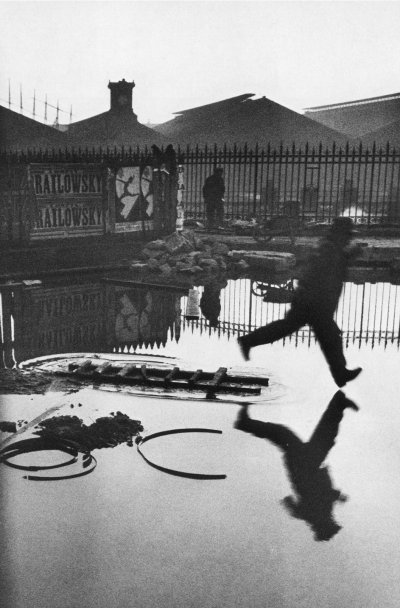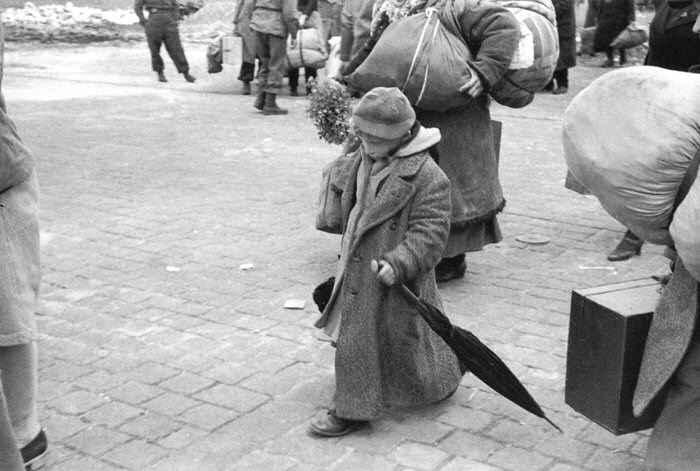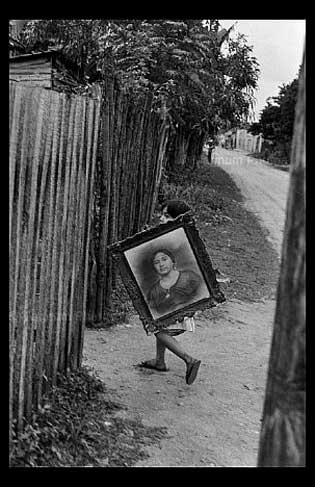Sub-title: 31 OF THE MOST IMPORTANT IDEAS ABOUT (STREET) PHOTOGRAPHY
DERIVED FROM ROLAND BARTHES’ BOOK CAMERA LUCIDA
inspired by the annotation by Kasia Houlihan (University of Chicago)
Roger Prentice Ph.D., MA (ACE), B. Ed. (Hons)
1st draft 4th Dec 2011
INTRODUCTION
Although my practice of photography is still at a beginning stage I want to keep up an old habit – that of theorizing my practice and practicing my theory. On the theory side as a starting point I have gone for ‘the big one’ Roland Barthes’ Camera Lucida.
Camera Lucida provides answers for an enormous range of problems, not just to understanding the true nature of photography. In particular it is staggeringly insightful about what it is to be human, in the world with others (and the memories of them) and the exquisite place the art of photography can play in deepening our realization of our true selves.
I have taken as a starting point Kasia Houlihan’s excellent summary/annotation to be found HERE The four sections relate to the 4 paragraphs in Kasia’s original summary/annotation. To Kasia I will be eternally grateful because it enabled me to stop wandering around in a desert of unmanageable responses to Camera Lucida – and it saved me from the temptation to dive in to the very large pools of academic writing about Camera Lucida – where I would probably have developed unbearable head-hurt and eventually drowned. Including the 10 Step course this is a framework for further development.
The area of photography that grips me currently is Street Photography. I discovered the truth in Camera Lucida two ways a) by doing street photography, however modest my achievements to date and b) through all the work that went into my doctorate – see HERE .
For serious students therefore I suggest the following 10 steps;
1) start taking photographs and keep up the practice between every one of the other steps listed here – & get as much feedback as possible.
SECTION 1
1 The book Camera Lucida sets out to determine a new way of looking at photography.
2 Camera Lucida is about a new consciousness – by way of photography.
3 Barthes seeks a new way of reading and valuing photographs – an altogether customized framework.
4 Barthes’ framework is to be distinct from all existing accounts of classifying photographs.
5 He wants to deal with photographs so as to get at the essence or noeme of photography.
6 Barthes says that he wants, ‘a History of Looking’. (RP don’t know what is meant but 26e below might be the answer)
7a In his search Barthes attempts to account for the fundamental roles of emotion and subjectivity
7b in i) the experience of and ii) accounting for Photography.
8 Subjective experience of photography (I would say creating as well as reading) has an essential nature—or eidos
9 The essential nature of a photograph is as an index indicating, ‘that-has-been.’
SECTION 2
10 Photography is set apart from all other forms of representation.
11 Previously established ways of classification etc are ‘disordered’ (because they fail to work with the essential nature of photography.)
12 Consequently it is unclassifiable (I suppose compared to say genre classification in film).
13 We need to hold to the fact that ‘the Photograph mechanically repeats what could never be repeated existentially’.
14 The essence is the event,
15 The event is ‘that which is never transcended for the sake of something else.’
16 In other words, the photograph is never distinguished from its referent—that which it represents;
17 ‘it simply is what it is’ (I, RP, wonder if this means, “It is what it is because it is indissolubly linked to that which it represents?)”
18 This is illustrated by the fact that one says ‘this is me’ when showing someone a photographic image of oneself, as opposed to ‘this is a picture of me.’
19 When we look at a photograph, it is not the actual photo that we see, for the photograph itself is rendered invisible; (presumably because we see what the photo is a referent of – or see what we are)
20 Consequently the photograph is unclassifiable,
21 Why? – because it resists language, as it is without signs or marks—it simply is. (This is comparable to Lacan’s version of the Real.)
22 Furthermore, the subject that is photographed is rendered object, dispossessed of itself.
23 Consequently it becomes ‘Death in person.’
SECTION 3
24 In his personal—subjective—examination of multiple photographs, Barthes proceeded to note a duality that was characteristic of certain photographs: a ‘co-presence of two discontinuous elements’—what he terms, the studium and the punctum.
25a The studium refers to the range of meanings available and obvious to everyone (RP because we are taught by the culture and society of which we are part).
25b The studium part of these photographs is unary and coded, – the former term implying that the image is a unified and self-contained whole
25c The unary meaning of the studium can be taken in at a glance (without effort, or ‘thinking’).
25d The latter (THE CODING) implies that the pictorial space is ordered in a universal, comprehensible way.
25e The studium speaks of the interest which we show in a photograph,
25f the desire to study and understand what the meanings are in a photograph,
25g to explore the relationship between the meanings and our own subjectivities.
26a The punctum (a Latin word derived from the Greek word for trauma) on the other hand inspires an intensely private meaning,
26b one that is suddenly, unexpectedly recognized and consequently remembered
26c It “shoots out of [the photograph] like an arrow and pierces me”.
26d It ‘escapes’ language (like Lacan’s real); it is not easily communicable through/with language.
26e The punctum is ‘historical’ as an experience of the irrefutable indexicality of the photograph (its contingency upon a referent).
26f The punctum is a detail or “partial object” that attracts and holds the viewer’s (the Spectator’s) gaze;
26g it pricks or wounds the observer.
SECTION 4
27a The ambiguity of the book’s title lends itself to the many levels on which the text addresses media theory.
27b This ranges from the very materiality of the photographic medium itself
27c to its grander implications for human consciousness in the pursuit of truth.
28a In his efforts to divorce photography from realms of analysis that deny or obscure its essence, Barthes ultimately formulates a new science of photography
28b It is an original framework in which photography steps beyond the shackles of classification and such terms as ‘art,’ ‘technique,’ etc. and, thus,
29a It draws upon an ‘absolute subjectivity’
29b This absolute subjectivity exceeds the normal boundaries of the everyday by moving the activity of viewing from a transparent relationship of meaning and expression to a level in which meaning seems to be there without the presence of subjectivity.
29c It is as if the photograph brings out the unconscious;
29d it also represents the unconscious, while at the same time, it denies all of these relations of meaning.
29e The photograph allows for the sight of self,
29f not as a mirror but as an access point into a definition of identity—
29g but identity associated with consciousness,
29h thus housing a whole;
30a it is in the photograph ‘where being coincides with self,’ (109)
30b It is ‘true being, not resemblance.’
31a The photographer, (is) a mediator,
31b S/he is one who (RP potentially & for themselves) supplies the transparent soul its clear shadow,
31c S/he reveals the soul’s value and not its mere identity (110);
31d the photographer, ‘makes permanent the truth.’
Camera Lucida is more like a revelation, a spiritual text, than a piece of academic writing. I have no no doubt that it’s a work of intuitive, soul-searching genius. It tells us nothing about the mechanics and technique of photography. It tells us everything about the nature of being human, in which photographs are a gateway to reading our soul.
All photographs are self-portraits. In all creating of, and viewing of, photographs we are searching. For ourselves, for our love, for that mysterious Whole of which we each are an infinitesimally small part.
We, and our photographs, are each the mote that the ray of light makes visible. Through them we enter the lucidly lit room.
For me in our ‘plucking from the flow’ the photographs that come to us it is not so much the ‘collecting of souls’, as Thomas Leuthard suggests, but is the embodiment of spirit caught when the mote turns in the light. That for me is my street, and its flow of (human) spirit, in that genre we call street photography.
Photo: Roger Prentice
GLOSSARY
1 WikiPedia Indexicality
an indexical behaviour or utterance points to (or indicates) some state of affairs……..
Social indexicality in the human realm has been regarded as including any sign (clothing, speech variety, table manners) that points to, and helps create, social identity.







 b)
b)
 C
C